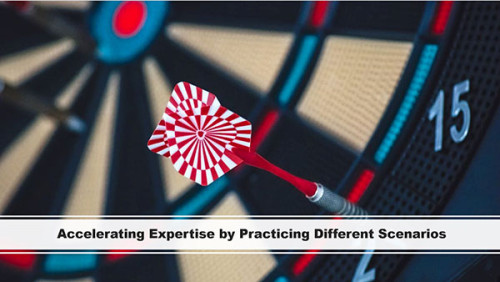Whether you’re an EMT rehearsing the nuances of first responder environments or a pilot in a flight simulator, practicing via different scenarios is the key to accelerating expertise. The same holds true in line clearance. We can tell craftworkers what to do (i.e., ensure compliance) or provide them with opportunities to put good practices into action first-hand.
Over the past few years at Lewis, as we began exploring the science of Naturalistic Decision Making, we discovered myriad factors that contribute to accelerating expertise with our frontline workers:
- Target setting: Like participating in a clay shoot, target setting can be a fun and practical way to build hands-on expertise especially with inexperienced crew members. This can be as simple as felling a tree and landing it on a target.
- Exposing craftworkers to a wide range of experiences: Instead of expecting team members to do the same job day-in and day-out to build expertise, mindful rotations among different work types with expert mentors can accelerate expertise and contribute to a greater sense of job satisfaction.
- Practicing sensemaking: Take the time to press pause during a complex task or unique situation and ask novices, “what do you think is going on?” and “what does that mean?” Ask the experts the same questions and allow team members to compare mental models.
- Pausing for reflection: Take the time to conduct After Action Reviews and ask team members what went well, surprises they encountered, they learned, they might do differently, and so on.
- Building in surprise: Standard training does not prepare teams for surprise. Rather, we have discovered that when we build surprise into a drill – like an intentional headset communication failure – teams are better able to adapt to future disruptions, as well.
Surprise is a fascinating topic. Stay tuned for more on that subject soon!
This article first appeared as a Sponsor Spotlight in the June/July issue of the UAA Newsline.




